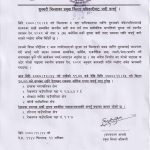Production status and growing environments of Rice in Nepal

Rice is a major cereal crop in Nepal in terms of area coverage, production and preference. It plays vital role in the current and future global food security. It is by far the most important as well as staple food crop in Nepal which accounts for about 50 percent of total agricultural area. Furthermore it contributes significantly to livelihood of majority of people and also to the economy of country. Rice contributes about 40% of the food calorie intake and nearly 20% to the agricultural gross domestic product.
Growing Environments of Rice in Nepal
Most lands in terai are suitable for rice cultivation whereas only small fraction of land in the hills and mountains are available for rice cultivation. Availability of rice lands is a critical constraint to increase rice production in Nepal.
Rice is grown in three different ecological environments in Nepal running parallel from east to west from the lowland in terai to the upland in hills and mountains. Rice is grown under two water regimes i.e irrigated and un-irrigated and in two topographic conditions i.e lowland and upland. These different ecological regions have distinct geological, soil, climatic and hydrological characteristics which results in distinct land use patterns. Terai, which represents tropical climate is referred as “Granary of Nepal” consists of flat and fertile alluvial land and plenty of water for irrigation due to which yield of rice in terai is higher in comparison to hills and mountains.
Almost 70 percent of the country’s rice output is produced in the terai region. Mid hills which represents sub tropical region covering hill terraces, river valleys produces 27 percent of the country’s rice output followed by only 3 percent of the rice output in mountain areas. In mountain areas or high hills, there is warm temperate climate covering mountain slopes, inter-mountain basins which yields the least as compared to other two regions of Nepal. Some rice areas having assured irrigation during summer, winter and spring seasons allows farmer to produce double rice crop in a year. Only single cropping is practiced in the high hill warm temperate regions in rainfed condition while double and triple cropping system is practiced in lowland in terai and inner-terai tropical region in irrigated condition.

Writer: Jeevan Pandeya (Student, Bsc. Ag IAAS Paklihawa Campus)

 एउटा यस्तो विषालु भ्यागुता, जसको मुल्य नै पर्छ ३ लाख, जान्नुहाेस्
एउटा यस्तो विषालु भ्यागुता, जसको मुल्य नै पर्छ ३ लाख, जान्नुहाेस्  भोलि र पर्सि बालबालिकालाई भिटामिन ए खुवाइदै
भोलि र पर्सि बालबालिकालाई भिटामिन ए खुवाइदै  खगराज अधिकारी गण्डकीको मुख्यमन्त्री नियुक्त
खगराज अधिकारी गण्डकीको मुख्यमन्त्री नियुक्त  सुनसरीमा दुवै पक्षबीच सहमति, कर्फ्यु खुकुलो हुदै
सुनसरीमा दुवै पक्षबीच सहमति, कर्फ्यु खुकुलो हुदै  स्टेफेनको शतकमा आयरल्याण्ड वोल्भ्सले नेपाल ए लाई दियो २८५ रनको लक्ष्य
स्टेफेनको शतकमा आयरल्याण्ड वोल्भ्सले नेपाल ए लाई दियो २८५ रनको लक्ष्य 


